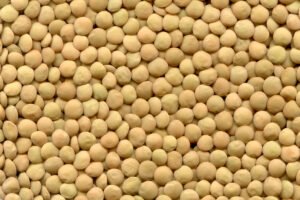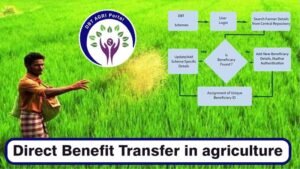Vertical farming is a modern method of growing crops in a controlled environment using vertical stacking. The goal is to increase yields while reducing land usage, water consumption, and the use of pesticides. By growing crops in a controlled environment, the conditions can be optimized to provide the best possible growth, leading to higher crop yields, increased food security and year-round availability of fresh produce.
Read more: Aquaponic Farming Complete Information Guide
Crops that are well-suited to vertical farming include:
Leafy greens: Lettuces, spinach, kale, and other leafy greens grow well in hydroponic systems and are well-suited to the controlled environment of a vertical farm.
Herbs: Herbs such as basil, mint, and cilantro grow well in hydroponic systems and are in high demand, making them an attractive crop for vertical farming.
Microgreens: Microgreens, such as pea shoots and wheatgrass, are high in nutrients and have become popular as a healthy addition to salads and smoothies. They are also well-suited to vertical farming.

Strawberries: Some varieties of strawberries can be grown in vertical farms, providing a high-value crop with a relatively short growing cycle.
Mushrooms: Certain types of mushrooms, such as oyster mushrooms, can be grown in a vertical farm environment.
These are just a few examples of crops that are well-suited to vertical farming. The selection of crops suitable for a vertical farm will depend on factors such as climate, equipment, and market demand. As technology advances, it is likely that the number of crops suitable for vertical farming will continue to expand.
Read more: Hydroponic Farming System Complete Information Guide
Country using vertical farming for food
Several countries are using vertical farming for food production, including:
- Japan: Japan has been a leader in the use of vertical farming for food production and has some of the largest vertical farms in the world.
- The United States: The United States has seen significant growth in the use of vertical farming, particularly in urban areas, where traditional agriculture can be limited.
- The Netherlands: The Netherlands is known for its innovative agriculture practices, and vertical farming is no exception. The country has several large vertical farms and is a leader in the development of hydroponic systems.
- South Korea: South Korea has been investing heavily in vertical farming in recent years, and the country now has several large vertical farms that produce a variety of crops.
- China: China has been making significant investments in vertical farming, and the country now has several large vertical farms that produce a variety of crops, including leafy greens, herbs, and microgreens.
These are just a few of the many countries using vertical farming for food production. The use of vertical farming is growing globally, as more and more people recognize its benefits and the need for sustainable food production methods increases.

Read more: What is Urban Agriculture & Its Advantage?
What are the advanteages of Vertical farming?
- One of the main benefits of vertical farming is the reduced use of land. Vertical stacking of crops in a controlled environment allows for the use of a much smaller land footprint compared to traditional agriculture. This makes it possible to grow crops in areas that are otherwise unsuitable for farming, such as urban environments.
- Another advantage of vertical farming is the reduced water usage. Traditional agriculture often requires large amounts of water for irrigation, but in a controlled environment, the water is recycled and reused, leading to a much more efficient use of water. Additionally, hydroponic systems used in vertical farming do not require soil, which is another advantage in terms of water conservation.
- Pesticides are another area where vertical farming has an advantage over traditional agriculture. In a controlled environment, the use of pesticides can be reduced or eliminated entirely, as the growing conditions are optimized, reducing the risk of disease and pest infestations. This results in healthier crops and a safer food supply.
- The year-round availability of fresh produce is another major benefit of vertical farming. Traditional agriculture is often limited by the changing seasons and weather conditions, but in a controlled environment, the conditions can be optimized to provide the best possible growing conditions, regardless of the time of year. This means that fresh produce can be produced year-round, providing a more stable food supply and reducing the need for imports.
- The use of technology in vertical farming is one of its key features. LED lights, hydroponic systems, and climate control are all used to create the ideal growing conditions for crops. The LED lights provide the necessary light for photosynthesis, while the hydroponic systems provide water and nutrients directly to the roots of the plants. The climate control systems ensure that the temperature, humidity and other environmental factors are optimized for growth.
- One potential drawback of vertical farming is the high cost of equipment and setup. The technology required for vertical farming is expensive, and the setup costs can be substantial. However, the benefits of reduced land usage, water consumption, and pesticide use, as well as year-round availability of fresh produce, often offset the costs in the long run.

Read more: Aerponic Potato Farming Information Guide
Disadvantage of verrtical farming
There are several disadvantage of vertical farming some of them are as below:
- High Initial Costs: Vertical farming requires a significant investment in technology and infrastructure, making it a challenging business model for many entrepreneurs. The cost of the necessary equipment, such as hydroponic systems, LED lights, and climate control, can be substantial.
- Energy Intensity: Vertical farming requires a large amount of electricity to power the lights, climate control systems, and pumps, which can increase operating costs and negatively impact the environment.
- Pest and Disease Management: Vertical farming systems are closed environments, which can make it easier for pests and diseases to spread. Pest and disease management can be more challenging and time-consuming in vertical farms compared to traditional agriculture.
- Limited Crops: Vertical farming is best suited for growing certain crops, such as leafy greens and herbs, which are well-suited to hydroponic systems. Growing other crops, such as root vegetables, can be more challenging in a vertical farm.
- Water Use: Vertical farming systems use large amounts of water, which can be an issue in regions with limited water resources. Additionally, the recirculation of water in hydroponic systems can result in the buildup of salts and other nutrients that need to be managed.
- Skill Requirements: Vertical farming requires specialized knowledge and skills in areas such as hydroponics, climate control, and lighting, which can be a challenge for those without prior experience.
- Market Competition: The market for vertical farm produce is still developing, and there is competition from traditional agriculture, which can impact the profitability of a vertical farming operation.

Read more: How To Start Herbs Farming?
vertical farming has several disadvantages, including high initial costs, energy intensity, pest and disease management challenges, limited crop selection, water use concerns, skill requirements, and market competition.
However, many of these challenges are being addressed by innovation and advancements in technology, making vertical farming a promising and sustainable solution for food production in the future.
How to do vertical farming analysis?
A profit analysis of vertical farming takes into account several factors including costs, revenue, and market demand. The costs of setting up a vertical farming operation include equipment costs, such as LED lights, hydroponic systems, and climate control, as well as operating costs such as labor, electricity, and water.
The revenue is generated through the sale of crops grown in the facility. The market demand for the crops grown in a vertical farm will also have an impact on profitability.
To determine profitability, the costs of operation must be weighed against the revenue generated by crop sales. Factors such as yield per square foot, price per unit, and market demand will all have an impact on the overall profitability of a vertical farming operation.
One advantage of vertical farming is the potential for increased yields per square foot compared to traditional agriculture. This can lead to higher revenue per square foot and greater overall profitability.
Read more: Cucurbits Farming In Polyhouse
In addition, the ability to control the growing conditions in a vertical farm can result in a higher quality product, which can command a higher price and increase revenue.
However, the high startup costs associated with vertical farming can also impact profitability. The cost of equipment and installation can be substantial, and the ongoing costs of electricity, water, and labor must also be taken into account.
Additionally, the market demand for the crops grown in a vertical farm must be considered, as this will impact the overall revenue and profitability of the operation.

Read more: What is Vertical Farming How It Can Be Done?
A profit analysis of vertical farming must take into account both the costs of operation and the revenue generated by crop sales. The potential for increased yields and the ability to command a higher price for a higher quality product are both factors that can contribute to the profitability of a vertical farming operation.
Vertical farming is a modern and innovative method of growing crops that offers many benefits over traditional agriculture. The reduced use of land, water, and pesticides, as well as the year-round availability of fresh produce, make vertical farming an attractive option for food production.
The use of technology in vertical farming also provides a more sustainable and environmentally friendly approach to agriculture. However, the high cost of equipment and setup is a factor that should be considered when deciding whether to implement a vertical farming system.




